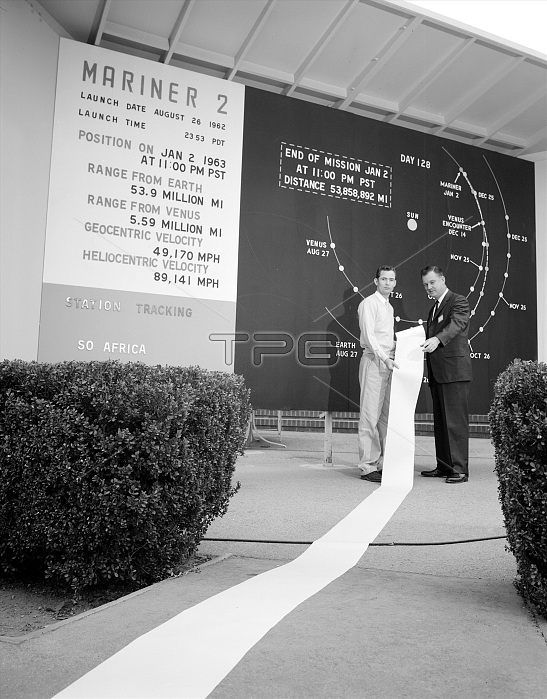
On December 14, 1962, NASA's Mariner 2 spacecraft sailed close to the shrouded planet Venus, marking the first time any spacecraft had ever successfully made a close-up study of another planet. It flew by Venus as planned at a range of 21,600 miles, scanning the planet's atmosphere and surface for 42 minutes. The spacecraft showed that surface temperature on Venus was at least 797簞 Fahrenheit on both the day and night sides, hot enough to melt lead. It also showed that Venus rotates in the opposite direction from most planets in our solar system, has an atmosphere mostly of carbon dioxide with very high pressure at the planet's surface, continuous cloud cover and no detectable magnetic field. It also found the solar wind streams continuously and that the density of cosmic dust between planets is much lower than it is near Earth.
| px | px | dpi | = | cm | x | cm | = | MB |
Details
Creative#:
TOP22317199
Source:
達志影像
Authorization Type:
RM
Release Information:
須由TPG 完整授權
Model Release:
No
Property Release:
No
Right to Privacy:
No
Same folder images:

 Loading
Loading